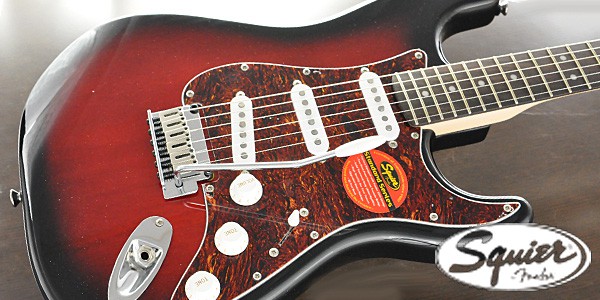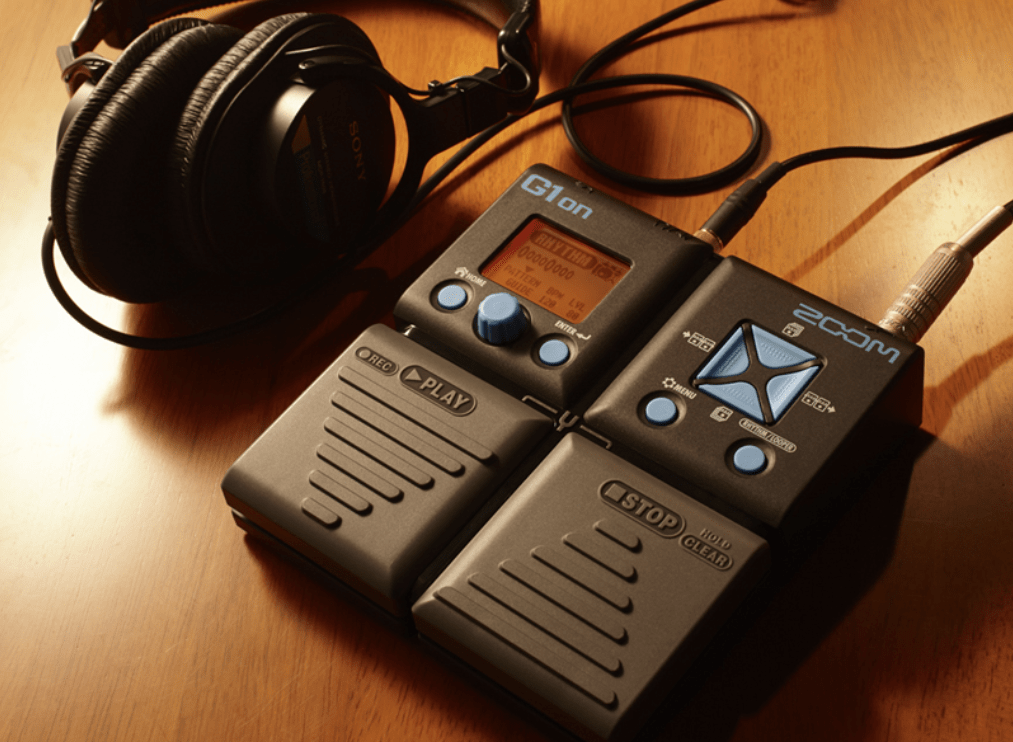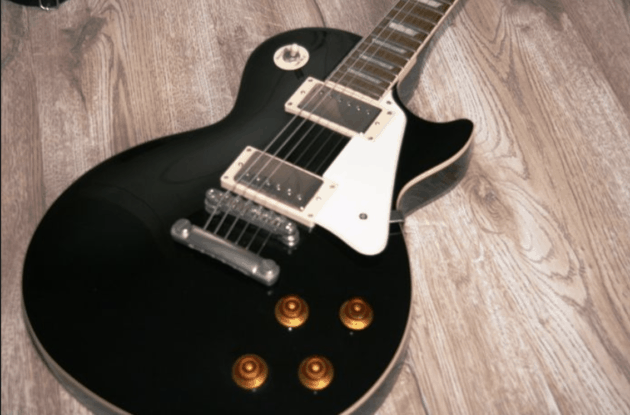Review: D’Angelico Premier DC – a good alternative?
D’Angelico might not be one of the biggest, best-known, or global guitar brands that you might be aware of, but they certainly come from a strong pedigree.
Based out of Manhattan, they’ve actually been on the go since 1932, and their earlier models are extremely sought after by collectors, including the likes of Eric Clapton and Pete Townsend. After a few dormant year, they returned with force in 2011, putting their names on guitars made both right here in the USA, and more affordable ones coming from the east.
The Premier DC is a good guitar for those looking for a guitar that looks like this, beyond the budgetary connotations of an Epiphone, but who aren’t ready to commit to a Gibson.
Colors:
- Trans Wine
- Black
- White
Core Specs:
| Construction type? | Set-neck | |
| Body material? | Maple | |
| Neck material? | Maple | |
| Fingerboard material? | Rosewood | |
| Number of frets? | 22 | |
| Pickup configuration? | D’Angelico humbuckers |
It’s worth noting that you actually have some options when it comes to your completed Premier DC. You have the option of having one of their own, ridiculously ornate ‘stairstep’ tailpieces, which looks very elaborate, but I’m not sure if that’s the extent of its benefits.
You can also choose to get it with or without f-holes. That’s an interesting one. I like the traditional look of the f-holes, but again, I’m not sure of the benefits of not having them.
Review: D’Angelico Premier DC
If there’s one thing the Premier DC is not, and that’s packed with surprises when you go through its parts. Apart from the tailpiece and f-hole options, this read like a standard spec sheet.
Before we begin, make sure you’re ordering Premier DC from a legitimate retailer, NOT from a counterfeit seller. For your convenience, here is the Amazon link to an authentic Premier DC retailer.
Although the guitar is made in the east, it doesn’t seem to use the unbranded parts that other such manufacturers utilize for their models from that part of the world. The pickups are their own creation, as is the stairstep tailpiece, as are the stairstep machine heads, as is the similarly themed truss rod cover…
It’s these fancy kind of elements of the guitar though which are exactly why you need to take a closer look at the rest of it: are these things intended to distract from the fact that actually, fanciness aside, the guitar doesn’t actually have anything to offer?
The neck and fingerboard has a lovely looking binding running the length of its edge. It looks clean and smooth, and free of any blemishes.
The headstock is worth a mention, because, well… look at it! It’s certainly very fancy. It has an ebony veneer, I guess to make it blacker than the rest of the guitar.
While a lot of effort has clearly gone into making a highly identifiable guitar, you can’t help but feel some of it is a bit OTT. Does it really need, it? Will it benefit the guitar? At this stage, I’m starting to worry this might be all looks and no substance.
D’Angelico Premier DC: Construction

If this was reality TV, I’d have an interview section with me dramatically declaring that I wanted to find out what was really going on.
The Premier DC is a fine looking guitar, even if I do have my reservations about whether the fancy – perhaps even gimmicky – designed parts will actually hold together.
The neck joint on the Premier looks absolutely fine. It’s a great example of some very tidy workmanship. Definitely something the company can be proud of. Very clean, flush with the body, no battle scars from trying to get it in place.
Poking around the hardware, and everything seems securely attached. I’m especially looking at the humbuckers: I’m intrigued as to what they’ll sound like, but more on that in a bit.
Peering down the length of the neck, and everything looks straight and even. I particularly like the block inlays – I think they add a real element of class, and something that’s less common on the Premier’s Gibson and Epiphone counterparts.
My main conclusion having considered the parts and construction is whether it was necessary. Is the only reason it costs more than an Epiphone but less than a Gibson, is that it has these embellishments, but is still made in the east?
I have to say, I’m impressed with the construction, but I’m still not sure about the hardware designs. But we’re about to bring it to the true test: how it sounds.
D’Angelico Premier DC: Tones

Yay! It’s noise o’clock!
Running through some stuff before plugging in at all, I discovered a little bit of fret buzz on the low E string. It’s not uncommon, and it’s nothing a set up won’t eliminate, but it’s good to know it’s there – I wouldn’t have caught that if I’d plugged right in.
I’m using my usual amp, a British-style, 15 watt, all valve affair, that really is just the loveliest. I’m also going to rock my usual EQ settings: bass at four, and middle and treble each at six – that generally gets me to where I want.
To be honest, that kind of amp seems about right for the type of player who’ll be looking at the Premier. It’s beyond solid states and hybrids, but not big and expensive either.
I ran it through my clean channel first. The bridge pickup didn’t sound bad. I’m not a fan of bridge pickups really, but this was OK. I could imagine it going well with some funk. Switching up to engage both pickups, and it was a nice full, warm sound. IT would be well-paired with some effect, like reverb, chorus or delay, but just a touch.
On the overdrive channel, I set the gain to six, and I certainly wasn’t disappointed. With both pickups engaged, you could nail a great rock sound for riff and open chords, with plenty of brightness left for some great bluesy-sounding solos. That’s all I need!
D’Angelico Premier DC: Playability
In terms of neck profile and general layout, the Premier is a comfortable guitar to play. It’s not too heavy either – it would take a while for it to get uncomfortable at a gig!
The neck and fingerboard is straight and smooth, with the binding preventing any sharpness or catching. All good.
A great deal of its playability though, will come down to its versatility as an instrument. In the last section, I mentioned funk, rock, and blues. Well, the applications for the Premier would reach far beyond that without too much effort.
With that in mind, it would be a great guitar for someone playing in a group that creates a fusion of styles, who may need to skip from one to the other, or in a function band who has a lot of styles to cover.
D’Angelico Premier DC: Conclusion
It may not be as recognizable a name as Gibson, Epiphone, Gretsch, or any of the other brands who make similarly styled guitars, but D’Angelico should not be overlooked if you’re looking for such a model.
It’s got the looks and tones, and is perfectly comfortable to play. Best of all about its tone, is just how versatile it is. I could easily hear this on everything from country, to funk, to metal, and everything in between.
I won’t pretend that D’Angelico’s spin on hardware design will be everybody’s tastes, but hey, beauty is in the eye of the beholder and all that.
If you’re looking to check out some other cool gadgets that we’ve reviewed, be sure to read our article on Renpho’s Bluetooth Body Fat Scale while you’re here!






I purchased this guitar about 2 months ago. I really messed around with the Epiphones and Gretsch’s at GC and they really did not compare to the Premier DC when it came to sound quality. Definitely not a Gibson equivalent! However, great tones for a great priced guitar.